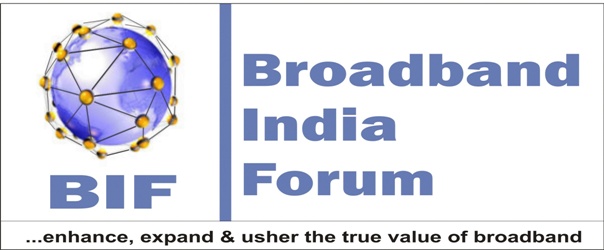 To make broadband reach all 1.3 billion citizens of this country, availability of broadband infrastructure, especially optical fiber, is a must. Since it is not possible to deploy optical fiber everywhere, wireless technologies that can extend the benefits of fiber to those places assumes a lot of importance.
To make broadband reach all 1.3 billion citizens of this country, availability of broadband infrastructure, especially optical fiber, is a must. Since it is not possible to deploy optical fiber everywhere, wireless technologies that can extend the benefits of fiber to those places assumes a lot of importance.
At the Broadband India Forum (BIF), J S Deepak-Secretary, DoT, said the Government is mulling the usage of higher frequency spectrum in the milimeter wave to address the backhaul needs.
M.F. Farooqui, chairman – BIF, said, “Broadband can be truly enabled by deploying fiber everywhere but that is not feasible due to costs involved and deployment challenges. E & V bands can provide tremendous acceleration to Digital India as they provide fiber like speed and capacity at competitive costs besides excellent customer experience.”
Future urban broadband access will be driven by the deployment of WiFi and 4G networks that require “fiber speed” backbone networks. These high-speed backbone networks will need to support a dense deployment of WiFi access points and base stations. The cost structure of a fiber backbone for such deployments everywhere can be prohibitive.
India currently has total of only 31,518 hotspots till date. This is far too low compared to the global average of 1 hotspot for every 150 persons. To achieve this, India would need additional 8 million hotspots, according to TRAI.
The V band (60 GHz) can not only be utilized for mobile backhaul but also act as a “fiber extension” to extend broadband connectivity from existing points of presence (“POPs”) to nearby locations for a number of applications in urban, semi-urban, and rural areas.
TRAI has proposed this as one of the potential bands for use for WiFi purposes. It could thus help overcome the congestion in the existing WiFi bands, thereby becoming a powerful enabler in proliferation of Broadband and help provide a big boost to Govt of India’s two flagship projects viz. Digital India & Smart Cities.
Amitabh Kant, CEO-Niti Aayog said, “At present broadband has reached nearly 10% of the entire population. India has a long way to go and it has to catch up really fast. We need vast number of innovations; one of them is the usage of V band and E band providing high capacity data where optical fiber hasn’t reached”.
Some of the emerging 60 GHz band technologies can now offer one or two orders of magnitude cost reduction over fiber and existing milli-metric band backbone networks.
Global momentum behind IEEE 802.11ad chipsets is key to driving opportunities in the 60 GHz band, the Forum said. Currently, the 802.11ad based 60 GHz band hosts a broad range of services including outdoor wireless links that extend the reach of fiber networks and personal networking technologies that deliver multi-gigabit speeds between devices.
Elaborating on the issues, T.V. Ramachandran, president – BIF, said, ” in today’s age and times, one of the greatest evils and worst enemies happens to be poverty of bandwidth and broadband. E & V bands (Wireless Fiber) can help mitigate this. ”
The Summit concluded that India’s Optical Fiber Network could be healthily complimented with the help of such innovative and standardized technologies which help drive global economies of scale in terms of costs and how global harmonization of spectrum bands viz. delicensing of V bands can help proliferate and democratize the use of the band for accelerating the availability of Broadband everywhere.
Innovation, long-term commitment of public projects, liberalized policies that attract more local private players and foreign companies were important measures to curb costs and ensure affordability besides giving a boost to accessibility and availability of broadband, experts said.
A delicensed framework would bring India broader economic and social benefits that would further the government’s Digital India goals. Globally, the availability of delicensed spectrum has driven substantial economic benefit. This economic benefit is real and substantial.
The World Bank estimates a 1.38 percentage point increase in Gross Domestic Product for every 10 percentage point increase of broadband penetration. In the United States alone, researchers have estimated that delicensed spectrum bands generated a total economic surplus of $222B in 2013, and contributed $6.7B to GDP.
By 2017, the same researchers have conservatively estimated that in the United States, delicensed bands will drive at least $547.2B in economic surplus annually, and contribute at least $49.7B to GDP.
The delegates to the summit also deliberated on the surge of the data usage and the consequent impact it has on the legacy networks and how the promotion of E & V band including delicensing of the V band can help alleviate the data backhaul issues coupled with opening of new avenues for proliferation of WiFi like access everywhere.





